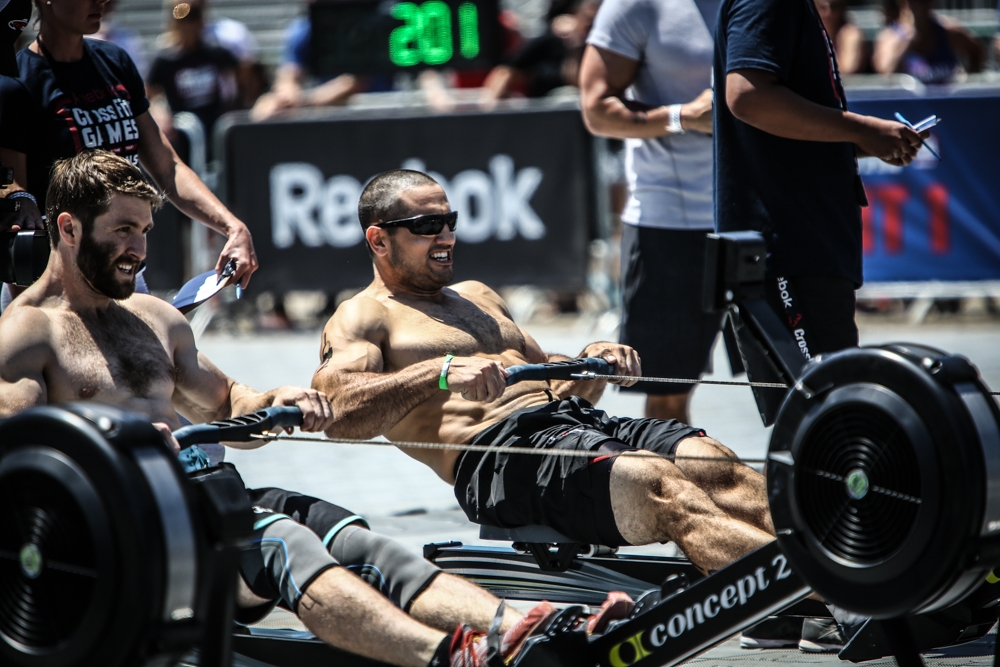
Dog Days of Summer Challenge
The Dog Days of Summer challenge has begun on the Concept2 Online Logbook!!
The challenge runs from August 1 to 28 and features a different total distance goal each week.
The details:
Complete each of the following four distance goals during the timeframes indicated and log them in your online logbook:
Week 1, Aug. 1–7: 10,000 meters
Week 2, Aug. 8–14: 20,000 meters
Week 3, Aug. 15–21: 30,000 meters
Week 4, Aug. 22–28: 40,000 meters
The distance goals do not have to be done in one sitting, but must be done during the timeframe indicated. By the end of the challenge, you will have accumulated 100,000 meters.
This is an individual challenge and meters must be entered online.
Read more here: Dog Days of Summer
Anytime the box is open and the rowers aren’t in use during class you’re welcome to come in and use them for the challenge.
I recommend accumulating your metres by using a variety of intervals.
Here’s an excerpt from the CrossFit Journal article “What is Fitness?” in relation to “cardio”:
Metabolic Conditioning, or “Cardio”
Biking, running, swimming, rowing, speed skating, and cross-country skiing are collectively known as “metabolic conditioning.” In the common vernacular they are referred to as “cardio.” CrossFit’s third fitness standard, the one that deals with metabolic pathways, contains the seeds of the CrossFit “cardio” prescription. To understand the CrossFit approach to “cardio” we need first to briefly cover the nature and interaction of the three major pathways.
Of the three metabolic pathways the first two, the phosphagen and the glycolytic, are “anaerobic” and the third, the oxidative, is “aerobic.” We needn’t belabor the biochemical significance of aerobic and anaerobic systems; suffice it to say that the nature and interaction of anaerobic exercise and aerobic exercise is vital to understanding conditioning. Just remember that efforts at moderate to high power and lasting less than several minutes are anaerobic and efforts at low power and lasting in excess of several minutes are aerobic. As an example the sprints at 100, 200, 400, and 800 meters are largely anaerobic and events like 1,500 meters, the mile, 2,000 meters, and 3,000 meters are largely aerobic.
Aerobic training benefits cardiovascular function and decreases body fat – all good. Aerobic conditioning allows us to engage in low power extended efforts efficiently (cardio/respiratory endurance and stamina). This is critical to many sports. Athletes engaged in sports or training where a preponderance of the training load is spent in aerobic efforts witness decreases in muscle mass, strength, speed, and power. It is not uncommon to find marathoners with a vertical leap of only several inches! Furthermore, aerobic activity has a pronounced tendency to decrease anaerobic capacity. This does not bode well for most athletes or those interested in elite fitness.
Anaerobic activity also benefits cardiovascular function and decreases body fat! In fact, anaerobic exercise is superior to aerobic exercise for fat loss! Anaerobic activity is, however, unique in its capacity to dramatically improve power, speed, strength, and muscle mass. Anaerobic conditioning allows us to exert tremendous forces over brief time intervals. One aspect of anaerobic conditioning that bears great consideration is that anaerobic conditioning will not adversely affect aerobic capacity. In fact, properly structured, anaerobic activity can be used to develop a very high level of aerobic fitness without the muscle wasting consistent with high volumes of aerobic exercise!! The method by which we use anaerobic efforts to develop aerobic conditioning is “interval training.”
Basketball, football, gymnastics, boxing, track events under one mile, soccer, swimming events under 400 meters, volleyball, wrestling, and weightlifting are all sports that require the vast majority of training time spent in anaerobic activity. Long distance and ultra endurance running, cross country skiing, and 1500+ meter swimming are all sports that require aerobic training at levels that produce results unacceptable to other athletes or the individual concerned with total conditioning and optimal health.
We strongly recommend that you attend a track meet of nationally or internationally competitive athletes. Pay close attention to the physiques of the athletes competing at 100, 200, 400, 800 meters, and the milers. The difference you’re sure to notice is a direct result of training at those distances.
The key to developing the cardiovascular system without an unacceptable loss of strength, speed, and power is interval training. Interval training mixes bouts of work and rest in timed intervals.

